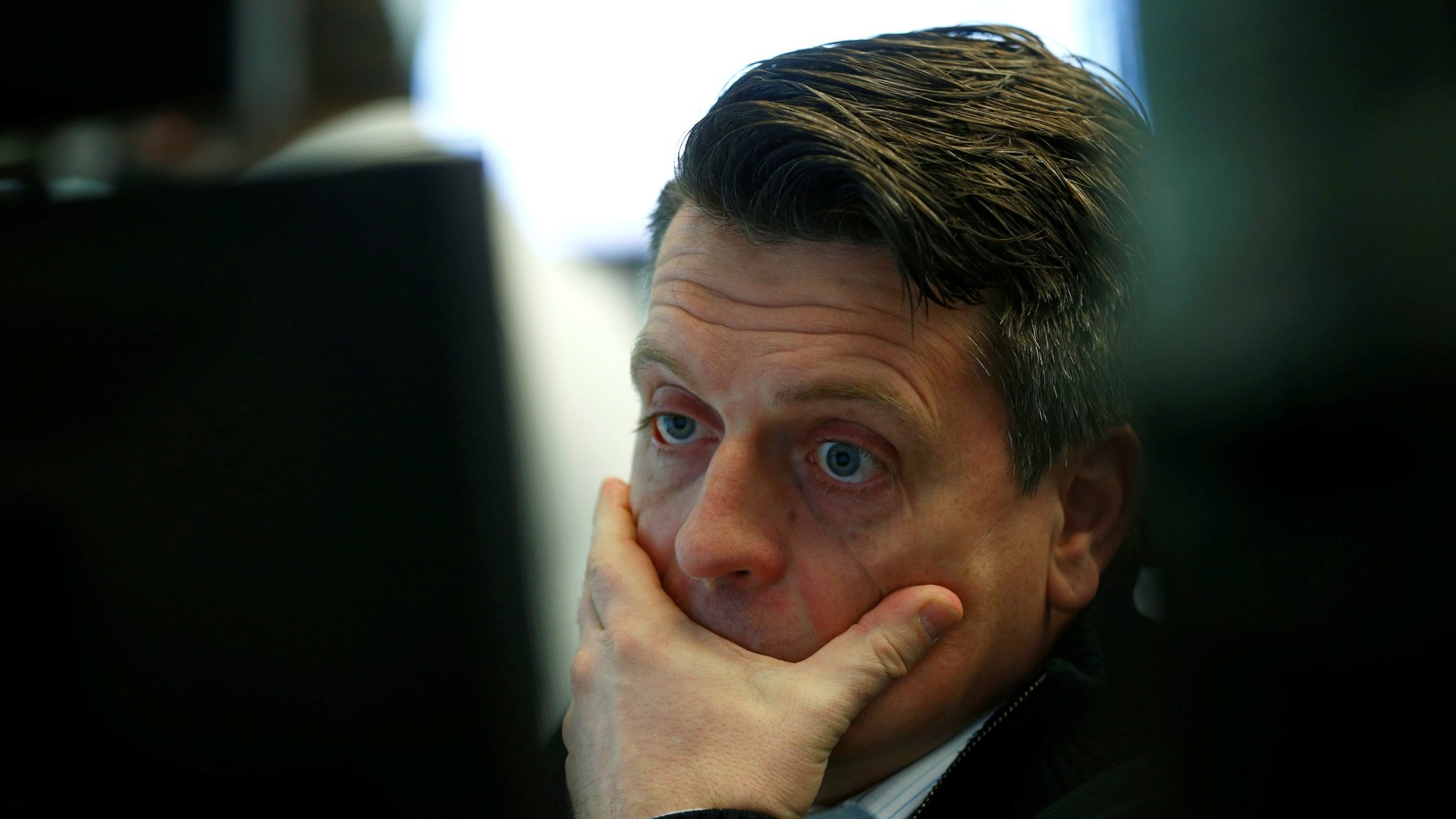Don’t kid yourself—nobody knows what really triggered the market meltdown
It’s been more than a week since turmoil struck markets around the world, erasing trillions of dollars of stock market value in the process. With prices suddenly swinging around wildly after a long period of calm, people are asking the obvious questions: Could we have seen this coming? Are the machines that dominate trading making things worse? Is there a glitch somewhere in the market’s plumbing that caused this?


It’s been more than a week since turmoil struck markets around the world, erasing trillions of dollars of stock market value in the process. With prices suddenly swinging around wildly after a long period of calm, people are asking the obvious questions: Could we have seen this coming? Are the machines that dominate trading making things worse? Is there a glitch somewhere in the market’s plumbing that caused this?
The honest answer is that nobody knows. In the US stock market alone, trading is splintered between more than a dozen electronic platforms, where a daily average of 10.4 billion shares have changed hands this month, according to Rosenblatt Securities. Even major trading firms like Virtu Financial, which posts bids and offers on thousands of securities on more than 235 venues around the world, have limited insight into what’s taking place. Regulators are building systems to compile more data, but there are doubts about whether they could process all the information even if they had it.
“Understanding why something happened in the market is only slightly easier than understanding the meaning of life,” says Manoj Narang, CEO of quantitative trading firm MANA Partners. “A lot of people have educated guesses, but they don’t know.”
When, in the parlance of a trading desk, markets are puking, there’s a mad rush to explain to the world what just happened. Analysts are expected to provide useful color to clients. Newswire journalists are dispatched to hunt down quotes and information. Big newspapers are expected to write definitive summaries of the episode. And while that’s happening, television networks are commenting in real-time. There’s usually some hand-waving about algorithms. “Nobody knows why” isn’t an acceptable answer.
“We rely on pundits who have some reputation in the markets to say things,” says Albert Menkveld, a professor of finance at VU University Amsterdam. That doesn’t mean everyone is wrong, but the signal is “noisy,” he said. Better, more complete data, could improve the analysis. A single legal identifier for each market participant, showing who did what, when, and where, could help.
Guesswork
Some educated guesses for the latest bout of turbulence have focused on assets linked to volatility. As more and more traders wagered on subdued price swings, the reaction to a sudden uptick in market gyrations was exaggerated, the thinking goes. The popularity of insurance company annuities linked to volatility (paywall) has also been identified as a possible factor. The massive growth of index funds may have contributed to the force of the downdraft. (Narang of MANA Partners admits that, with a “giant grain of salt,” he’s partial to explanations pointing to outsize bets on volatility.) These are all valid theories.
For proof that nobody really knows what’s going on, consider the so-called flash crash in May 2010, when US equity and futures indexes briefly dropped by 5% or more, and the Dow Jones Industrial Average dipped by about 1,000 points in a matter of minutes. It took four months for government watchdogs to publish a report (pdf) on the episode. The document cited a large selling order from a single investor as a key factor. Academics have cited other possible causes (pdf); five years after the crash, US authorities blamed a single point-and-click trader for exacerbating the declines. Today, eight years on, the answers are still unsatisfying.
The officials who regulate markets know they lack critical information. That’s why they’ve been working on a database—the Consolidated Audit Trail (CAT)—for this information for more than three years. The system will house data pertaining to billions of daily trading orders for stocks and options. It’s meant to help detect manipulation and to understand unexpected market fluctuations. The EU isn’t building an audit trail system quite like CAT, but it is ramping up (paywall) the amount of data that must be reported and stored across asset classes.
A company called Thesys Technologies was selected to build the US database, but it’s far from fully operational: Exchanges now report data to the CAT system, and brokers will have to do the same later this year (pdf). Some in the industry have argued that individual client data should be excluded from the CAT system, saying it’s vulnerable to hacking. Even when it’s fully up and running, assets like commodities won’t be included, suggesting regulators will still have blind spots.
When US regulators gain access to the data, they may not have the expertise to parse the enormous troves of information. The best data scientists and quants in the private sector won’t have access to it, said Narang, who was previously CEO of Thesys predecessor Tradeworx. “It may be years before they can extract meaningful information from CAT,” he says.
In the meantime, we’re left with guesses—some more informed than others. It’s necessary to ask questions and test out theories, but it’s just as important to remember how little we really know about the underlying currents in modern markets. For his part, Narang suspects that even an optimal incarnation of the CAT system could fall short of providing deeply satisfying answers. In the meantime, he says, if anyone says they really know what’s happening, “they’re full of shit.”